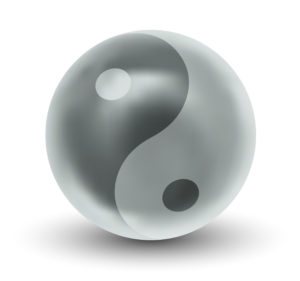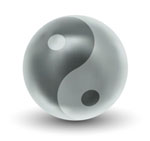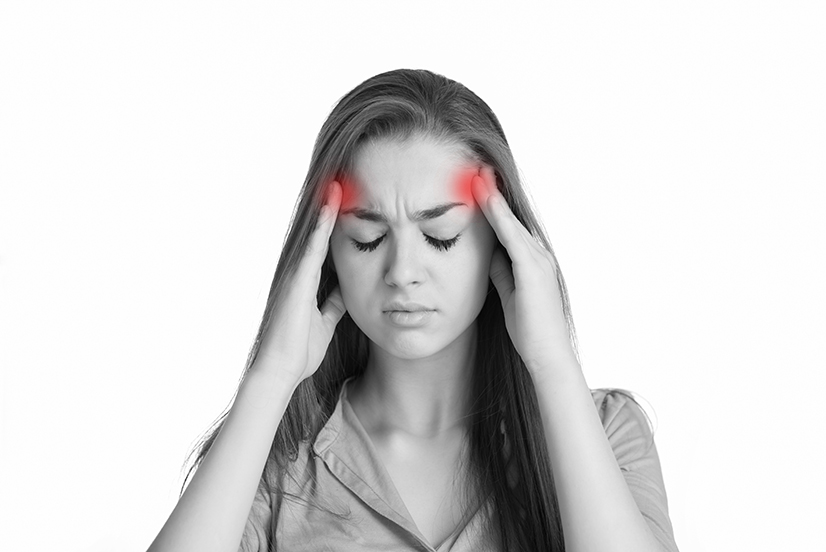The Migraine Headache Overview – June is National Headache Awareness Month. The term headache includes migraines, tension headaches, and cluster headaches, with 90% of them as primary headaches, meaning that there is no underlying other cause. According to the Migraine Research Foundation, nearly 1 in 4 U.S. households are affected by people with migraines, which results in 12% of the population, including children, suffering from migraines. More than 90% of migraine sufferers are unable to work or function normally during their migraine, which has become the 6th most disabling illness in the world. It is a public health issue with serious social and economic consequences. Healthcare and lost productivity costs associated with migraines are estimated to be as high as $36 billion annually in the U.S.
The word “migraine” is from the Greek ἡμικρανία (hemikrania) and is defined as a “pain on one side of the head.” To diagnose a migraine, the headache should have the following clinical characteristics: unilateral location, pulsating quality, moderate to severe intensity and aggravation by routine physical activity. In addition, the attacks must have at least one of the following: nausea/vomiting and sensitivity to light, sound, or smell.
The underlying causes of migraines are unknown. However, childhood early onset migraine suggests that there is a closely related to genetic component. Chronic migraine is often comorbid with other psychiatric disorders such as anxiety, depression, sleep disorders, fibromyalgia and bipolar disorder. Many triggers such as stress, fatigue, menstrual cycle fluctuations, and certain foods can induce migraines.
Conventional treatments include analgesics, anti-emetics, anxiolytics, NSAID, and narcotics during acute attack of migraine. Preventive medications incudes antidepressants, serotonin antagonists, B-blockers and calcium channel blockers. These medications may or may not help migraine sufferers and come with strong side effects.
Traditional Chinese Medicine (TCM) Approach to Migraine Headache
History and Overview
As early as 221 BC, Huang Di Nei Jing (Yellow Emperor’s Internal Classic), considered the Bible of TCM, clearly described that migraine headache is the “wind-evil attacking one side of the body”. This book recognized that “wind-evil” is the major cause for onset of all headaches. The original text states: “Regardless of collateral, channel, visceras or bowel, when any of them is invaded by the wind-evil, it will become the residing of wind evil on one side of the body. After the invasion of the wind –evil, it goes up from the Feng Fu [point] to reach the head, and head-wind syndrome will occur; the symptoms of the head-wind syndrome are headache”. It also describes the course of migraine attacks: “on the previous day of the attack of the head-wind, the patient feels pain in advance, has a headache and is reluctant to go outside. The disease will get better on the days when wind is abundant.” This matches the classical 4-72 hour duration of migraine attacks in conventional diagnosis.
In TCM, the head is the place where all the yang meridians of the hand and foot meet, and Qi and blood of the five “zang” organs and six “fu” organs all flow upward to the head. When the pathogenic wind (“wind-evil”) invades the human body, it first attacks the upper portion of the body. The liver is the main organ responding to wind and the side of the head because liver qi often blazes upward when the liver is in disharmony. It also further differentiates migraine into three subgroups: headaches due to invasion of pathogenic wind into the meridians and collaterals, headache due to upsurge of liver yang, and headache due to deficiency of both Qi and blood.
Acupuncture and Chinese Herbs in Treatment of Migraine Headaches
Traditional Chinese Medicine does not generalize migraines headaches as one particular syndrome. Instead, it aims to treat the specific symptoms that are unique to each individual using a variety of techniques such as acupuncture, Chinese herbs, Tui Na massage, and energetic exercises to restore imbalances found in the body. While carefully examining the specific triggers, characteristics, and location of the headaches, and the patient’s constitution and medical history, treatment plans are tailored to meet the individual’s need. A comprehensive treatment plan based on the Chinese medical diagnosis ensures that both the root (constitution) and the manifestation (characteristic of the headache) are addressed. For example, treatment of acute headache is to focus on immediate relief, and in-between-migraine episodes focus more on prevention by addressing the root causes.
TCM Syndrome Differentiation and Herbal Medicine in Migraine Headaches
Since migraines are closely associated with the liver, most patterns are related to liver channel or organ disharmony. We will focus on the following liver patterns and two non-liver channel patterns:
- Liver Overacting on the Spleen with Blood Deficiency 肝脾不和 Representative formulas: Xiao Yao San, Chai Hu Shu Gan San, and Si Wu Tang. Symptoms: one-sided headache occurs often in women during PMS, blurred vision, sensitivity to light and noise, numbness and tingling of fingers and toes, breast distention, frequent sighing, depression, fatigue, cold hands and feet, alternating constipation and diarrhea, pale tongue, and a wiry, thin pulse.
- Liver Yang Rising 肝阳上亢 Representative formula: Tian Ma Gou Teng Yin. Symptoms: throbbing headache behind the eyes & temporal area, dizziness, severe pain at night, sensitivity to light, anger, insomnia, tinnitus, bitter taste in the mouth, red tongue, and a wiry rapid pulse.
- Liver Overacting on the Stomach with Stomach Cold 肝胃虚寒,浊阴上逆 Representative formula: Wu Zhu Yu Tang. Symptoms: vertex headache, chilly sensation in the vertex, aversion to cold, vomiting clear fluids, wet tongue with white tongue coating, and a wiry and tight pulse.
- Phlegm Damp Retention 痰浊头痛 Representative formula: Ban Xia Bai Zhu Tian Mu Tang. Symptoms: headache, dizziness, heavy-head feeling like a tight band wrapped around the head, nausea, vomiting thick fluids, fatigue, anxiety, pale tongue with a greasy, thick coating, and a slippery pulse.
- Blood Stasis 淤血头痛 Representative formulas: Tong Qiao Huo Xue Tang and Xue Fu Zhu Yu Tang. Based on the previous patterns, certain herbs are added to target specific locations of migraine headaches, so-called “guiding herbs” to enhance effectiveness. Symptoms: enduring, long-lasting headache, fixed stabbing pain, purple tongue, and a choppy pulse.
Meridian Theory – the chart below outlines the channels or meridians affected, the location of pain on the head, as well as the herb(s) of choice to alleviate that type of headache.
 Channel Name – Yang Ming – Headache Location – Forehead and eyebrow region
Channel Name – Yang Ming – Headache Location – Forehead and eyebrow region
Bai Zhi, redix angelicae dauhuicae – Dispels wind cold and stops pain. It is commonly used for frontal and temporal headaches, facial pain, and sinus congestion.
Man Jing Zi, vitex rotundifolia – Dispels wind damp heat and targets the face and eyes. It is often used for frontal and temporal headache as well as eye pain from wind heat and Liver heat patterns.
 Channel Name – Tai Yang – Headache Location – Occiput (back of the head) involving the neck
Channel Name – Tai Yang – Headache Location – Occiput (back of the head) involving the neck
Qiang Huo, notopterygium root – Dispels wind cold damp and stops pain. It is usually used for occipital headaches.
Ge Gen, radix puerariae – Softens the muscles and dispels wind. It is for neck and occipital pain and neck tightness from hypertension.
 Channel Name – Shao Yang – Headache Location – Side of the head, temples and ears
Channel Name – Shao Yang – Headache Location – Side of the head, temples and ears
Chai Hu, radix bupleuri – Dispels wind heat, harmonizes Shao Yang channel, dredges the Liver and alleviates Qi stagnation. It is commonly used for temporal and vertex headaches from Qi stagnation.
Chuan Xiong, ligusticum striatum – Activates Qi and blood, and dispels wind. It is the premier herb for all excess-type headaches.
 Channel Name – Jue Yin – Headache Location – Vertex
Channel Name – Jue Yin – Headache Location – Vertex
Wu Zhu Yu, tetradium ruticarpum – Disperses cold and stops pain, descends rebellious liver Qi. It is for vertex headache and vomiting due to stomach cold.
Xi Xin, asarum sieboldii – Disperses cold, relieves pain, and unblocks orifices.
Channel Name – Tai Yin – Headache Location – All over the head with heaviness
Fang Feng, radiz ledebouriellae – Expels wind damp and alleviates pain, especially for headache, chills and body aches. Cang Zhu, atractylodes lancea – Dries damp, strengthens spleen, and improves vision.
Other Treatment Options
For most migraine sufferers, reducing stress plays a crucial role in healing this condition. Tai Chi and meditation can be incredibly helpful practices in this regard. These practices help restore body circulation through movement, awareness, and deep breathing. Many people with chronic pain have also been able to heal their symptoms using these techniques alone.
Dietary Suggestions
In a survey of 429 people with migraine, 16.5% reported migraines triggered by cheese or chocolate, 28.4% reported sensitivity to all alcoholic drinks, 11.8% were sensitive to red but not white wine, and 28% were sensitive to beer. Another survey of 490 people with migraine published in the journal Cephalgia found that the most common food triggers were chocolate, cheese (18%), citrus (11%) and alcohol (29%). Dietary triggers may affect migraine by influencing the release of serotonin, causing constriction and dilation of blood vessels, or by directly stimulating areas of the brain such as the trigeminal ganglia, brainstem, and neuronal pathways.
General rules for avoiding headaches:
- Avoid caffeine and alcohol.
- Avoid inflammatory foods such as sugars and refined carbs.
- Eliminate migraine-triggering foods such as chocolate, cheese, MSG, and peanuts for a period of time.
- Avoid Smoked, cured or pickled meat or fish.
- Eat plenty of organic fruits and vegetables.
- Drink eight glasses water daily. Dehydration plays an integral role in many headache patterns.
- Get plenty of sleep. People who get between four and six hours of sleep have more frequent headaches versus people who got six to eight hours a night.
Conclusion
The greatest advantage of acupuncture and herbs over Western medicine is that it is virtually harmless. Some medications can have serious side effects and can, in some instances, actually lead to patients experience recurrent headaches. Compared to conventional medicine, TCM treatment toward migraine is not only to control symptoms but aims to treat the patient as a whole to eventually eliminate migraines. With the right combination of treatments and a strong commitment to improved health, most patients respond very well to the Chinese medical treatment of migraines. One must keep in mind that every person is unique in clinical presentation, thus treatment plans and herbal formulas are different for individuals. Herbal consultations are available with The Acupuncturists at our Margate / Coral Springs location. Call today to schedule one.
References
- Armm, Brendan. “Oriental Medicine and Migraines.” All About Acupuncture, Acupuncture Today, 1 Sept. 2007, www.acupuncturetoday.com/mpacms/at/article.php?id=31573.
- Ellis, Andrew. Notes from South Mountain: a Guide to Concentrated Herb Granules. Thin Moon, 2003.
- “How Chinese Medicine Understands Headache Disorders.” Hypertension : Diagnosis / West and East Medicines, Shen Nong Limited, 2005, www.shen-nong.com/eng/exam/headaches_chinese_medicine_understands.html.
- “Migraine Facts.” Migraine Research Foundation, 2018, migraineresearchfoundation.org/about-migraine/migraine-facts/.
- “Migraine.” Wikipedia, Wikimedia Foundation, 12 May 2018, en.wikipedia.org/wiki/Migraine.
- Ridsdale, Leone. Self-Management Migraine Headache Education (SHE). ISRCTN, 5 June 2016, www.isrctn.com/ISRCTN53460881.
- Silberstein, Stephen D., et al. Atlas of Migraine and Other Headaches. Taylor & Francis, 2005.
- 周肿瑛, 中医内科学,中国中医药出版社,2007


